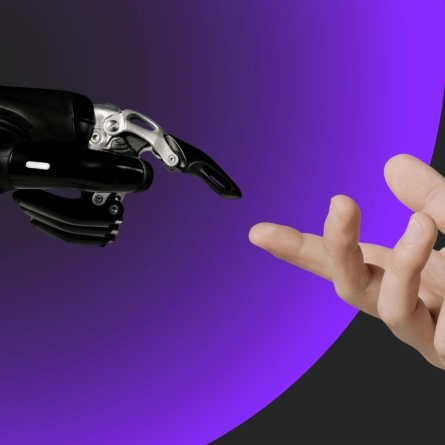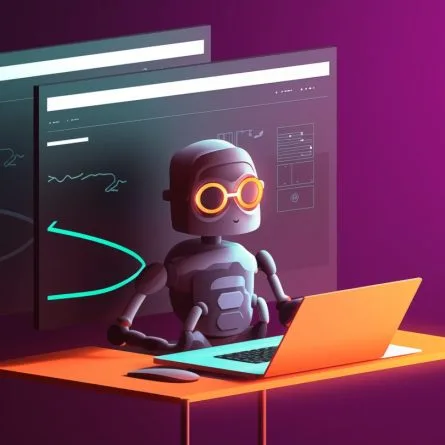Agentic AI Is Here — What Will It Mean for Your Website?
If you haven’t yet heard of agentic AI, take just half a beat. You will. Industry insiders everywhere are hailing this technology as the next Next Big Thing that will revolutionize our lives, both personally and professionally.
Where previous artificial intelligence models could respond to commands, generate content, and even learn from and adapt to algorithms and statistical models, agentic AI is a completely different animal inhabiting an entirely new space: autonomous problem-solving. That means it can take directions from users and then make decisions, complete tasks — and even learn from its own mistakes — without their input or oversight.
Nielsen Norman Group calls this “the first new UI paradigm in 60 years.”
“The user no longer tells the computer what to do. Rather, the user tells the computer what outcome they want. Compared to traditional command-based interaction, this paradigm completely reverses the locus of control.”
—NN/g
And while the leading agentic AI platforms — including Google’s Gemini 2.0, Alibaba’s QwQ-32B, and OpenAI’s Operator — are still in varying stages of development, experts agree that they’re improving rapidly and will only get better as time goes on.
A Deeper Dive Into How It Works
According to a recent article by Shomit Ghose, a longtime Silicon Valley entrepreneur and lecturer at UC Berkeley’s College of Engineering, agentic AI’s capabilities can be lumped into four main categories:
-
Assess a task, determine what needs to be done, and gather relevant data to understand the context.
- Plan the task, break it into steps, gather necessary information, and analyze the data to decide the best course of action.
-
Execute the task using knowledge and tools to complete it, such as providing information or initiating an action.
-
Learn from the task to improve future performance.
Source: The Next “Next Big Thing”: Agentic AI’s Opportunities and Risks
In simpler terms, this technology acts as a digital concierge that can proactively handle tasks like:
EXAMPLES
- Booking appointments
- Recommending personalized learning resources or courses
- Comparing prices and making tailored shopping suggestions
- Filling out job applications
- Managing finances
- Offering investment guidance
- Planning and booking trips
- And so much more
Let’s say you’re using an agentic AI platform, and you give it the following instructions:
“Find a five-star Google-rated dermatologist within 15 miles of my home that accepts my insurance, schedule an appointment, and tell me the cost of the visit. Also, check my latest lab test results.”
Here’s how the “agent” is designed to respond:
-
Using your location, it searches local provider directories for top-rated dermatologists within your insurance network.
-
After checking the provider’s availability, it suggests appointment time slots and guides you through the online booking process.
-
Cross-referencing your insurance details with the provider’s billing information, it estimates your out-of-pocket visit fee.
-
Next, it guides you to your online healthcare portal, helps you log in, and navigates to your lab results — explaining the findings to you in everyday language. (Forgot your password? No worries — agentic AI has you covered there, too, with suggestions for new credentials that meet the portal’s security criteria.)
What This Means for You & Your Website
The most glaring change for any organization with a website will be a reduction in human visitors, who will be replaced by AI agents browsing, parsing, reading, and interpreting your content. This is going to require a shift to an “AI-first mindset” — or, at the very least, treating AI web scrapers and traditional audiences with equal importance.
As AI agents become an increasingly important intermediary audience, you’ll need to convince them to surface your site as a solution that matches their needs and helps them complete their tasks. In a nutshell, this means it’ll be more important than ever to have good content that is well organized within a streamlined and easy-to-navigate UI.
Here are 5 steps you can start taking today to ensure your website doesn’t get blindsided by these changes.
1. Revisit Your SEO & Content Strategies
While agentic AI is changing the traditional rules of SEO, the good news is that the new rules won’t be drastically different. In addition to ensuring your content aligns with your human users’ expectations and most frequently used keywords, you’ll want to think about best practices in AI search and readability.
AI likes descriptive, fully formed, and updated content that it can easily ingest and interpret. While you don’t want to feature giant walls of text, you should prioritize long-form paragraphs with clear, declarative sentences that enable agents to obtain the most accurate results. Don’t dilute your messaging by combining too many disparate topics on one page or using visual cues to communicate key pieces of information (e.g., infographics or a grid of your store locations) — write it out in prose instead.
For a lengthier discussion on this topic, read The AI Revolution Is in Full Swing: Have You Adjusted Your Web Content Strategy Yet?
2. Pave the Way for Easier Navigation & Interpretation
AI agents won’t browse your site in the traditional sense, but they will rely on intuitive navigation, structured data, and real-time APIs to glean information and take action. Be diligent about using effective metatags and semantic HTML tags — and leverage schema markup to highlight key bits of information like FAQs, product and service descriptions, and contact information so AI agents can easily find and extract them.
3. Remember That Speed Wins, Always
AI-powered web crawlers and search engines prioritize fast, mobile-friendly websites. Make sure yours is up to snuff using tools like PageSpeed Insights and WebPageTest. Learn more about optimizing site speed by reading our Guide to Google Core Vitals.
4. Double Down on Security & Privacy
The increase in bot traffic will create a need for stronger protection from malicious actions. Consider AI-driven fraud-detection solutions like Cloudflare, SafeDNS, and Anomali.
5. Stay on Top of Future Changes
One thing is certain: This technology will continue to evolve at breakneck speed. Monitor changing AI-driven web standards and search engine updates to stay in the know.
How Eastern Standard Can Help
Have questions about how agentic AI fits into your long-term digital strategy? Reach out. Our team will be happy to discuss solutions with you.



